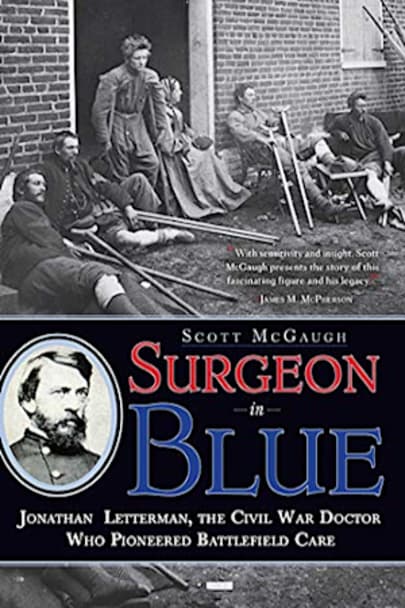Jonathan Letterman was an outpost medical officer serving in Indian country in the years before the Civil War, responsible for the care of just hundreds of men. But when he was appointed the chief medical officer for the Army of the Potomac, he revolutionized combat medicine over the course of four major battles—Antietam, Fredericksburg, Chancellorsville, and Gettysburg—that produced … unprecedented numbers of casualties. He made battlefield survival possible by creating the first organized ambulance corps and a more effective field hospital system. He imposed medical professionalism on a chaotic battlefield. Where before 20 percent of the men were unfit to fight because of disease, squalid conditions, and poor nutrition, he improved health and combat readiness by pioneering hygiene and diet standards. Based on original research, and with stirring accounts of battle and the struggle to invent and supply adequate care during impossible conditions, this new biography recounts Letterman’s life from his small-town Pennsylvania beginnings to his trailblazing wartime years and his subsequent life as a wildcatter and the medical examiner of San Francisco. At last, here is the missing portrait of a key figure of Civil War history and military medicine. His principles of battlefield care continue to be taught to military commanders and first responders.
more



I gave this book a five because it is very informative and well written. I am an RN and find early medical history very interesting. It explains how medical care was reorganized during the civil war so that wounded soldiers got the quickest and best care.
Interesting probably only for the medical history buff.
It was very informative. Progress has been made.
Good book about Civil War.
After “Surgeon in Blue” you’ll add the US Army Medical Corps to the list of formerly sleepy outfits that mightily rose to the occasion during the Civil War. Dr. Letterman started his career with out of the way military postings, but rose rapidly when Gen. George McClellan recognized his abilities. This is a must for American History buffs, all the more so for those who study the Civil War.
Surgeon in Blue is a very thorough book about a Civil War surgeon who revolutionized military medicine, with new procedures and a “can-do” attitude. The author obviously did a lot of resarch and hard work on the book. I was disappointed to not find any pictures. I know that there are many photos taken during the Civil War, so this surprised me. I think that would have brought home the facts even better. The book gives the backstory of what ha previously not worked, before describing what did improve the dire crisis that faced soldiers wounded on Civil War battlefields. Doctors faced challenging conditions that ranged from opporessive humidity to superior officers who underestimated the value of medical supplies and sometimes left them behind. The work of both paid Army physicians and volunteers was often heartbreaking, and far outnumbered by those needing their care. Volunteer nurse Cornelia Hancock wrote, “So appalling was the number of wounded as yet unsuccoured, so helpless seemed the few who were battling against tremendous odds to save life, and so overwhelming was the demand for any kind of aid that could be given quickly, that one’s senses were benumbed by the awful responsibility that fell to the living.” Good book to read, if you are interested in the Civil War or the history of medicine.
Facinating story of how MASH units got their beginning under the guidance of Letterman’s wisdom, determination, and luck having a supportive commanding officer. For Civil War buffs, this book offers insight into yet another dimension of that awful war.
interesting topic..
If you like history especially medical history this is for you. Great information well written about a little known character
I read a lot of histories of the Civil War as well as biographies and memoirs but this is a subject that is rarely covered. Granted it might make a few readers flinch, but the truth is that most soldiers died from disease, exposure, and chronic malnutrition rather than in battle. Surgery was rough and ready, and doctors knew nothing about germs, infection, and sterilizing surgical instruments (such as they were). Well-researched and compelling.
Any person interested in medical history and the civil war should read this, to understand the “behind the scenes” work that was done to try to improve the lives of the Union soldiers. It also shows the conflicts with the existing bureaucracy and traditional military infighting, as well as, the perceived view of the lowly place of military medicine at the time.
Interesting story but filled with unneeded trivia and written By an ameturish author.
His career during the civil war was short. He developed the ambulance system, but then resigned to make money.
I wonder if Pvt. Joe Blow of the regular army could have resigned because he wanted to do something else in 1864?
This biography of Surgeon General of the Army during the civil war discusses in great detail many of the significant innovations that Letterman introduced into battlefield medicine that saved many lives of wounded soldiers. Many of those systems are still in place today.
A true historical account of the man who brought battlefield medicine into the modern age. Without Jonathan Letterman’s understanding of what was needed and how it should be applied, we would not have helped so many Americans in battle.